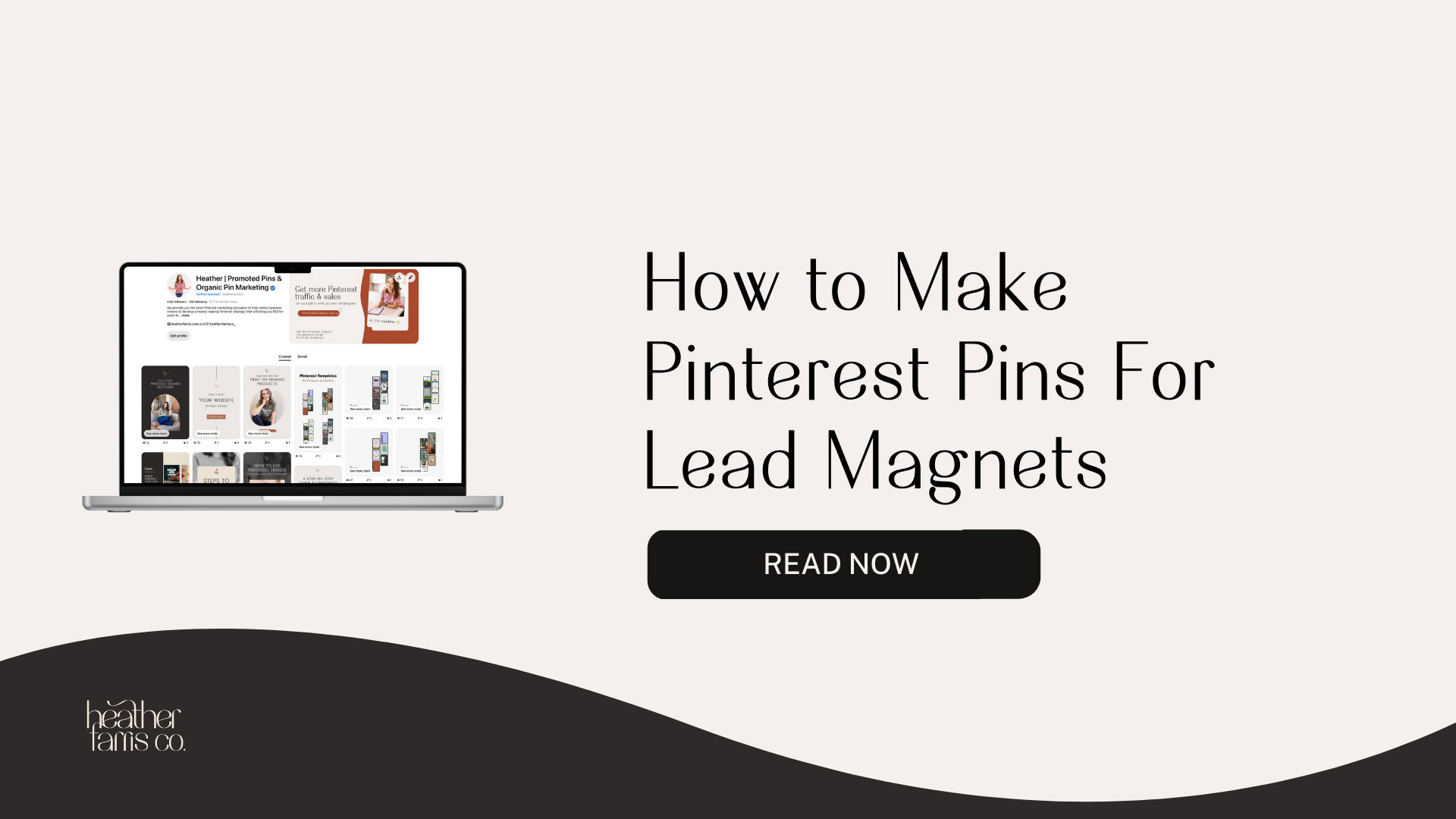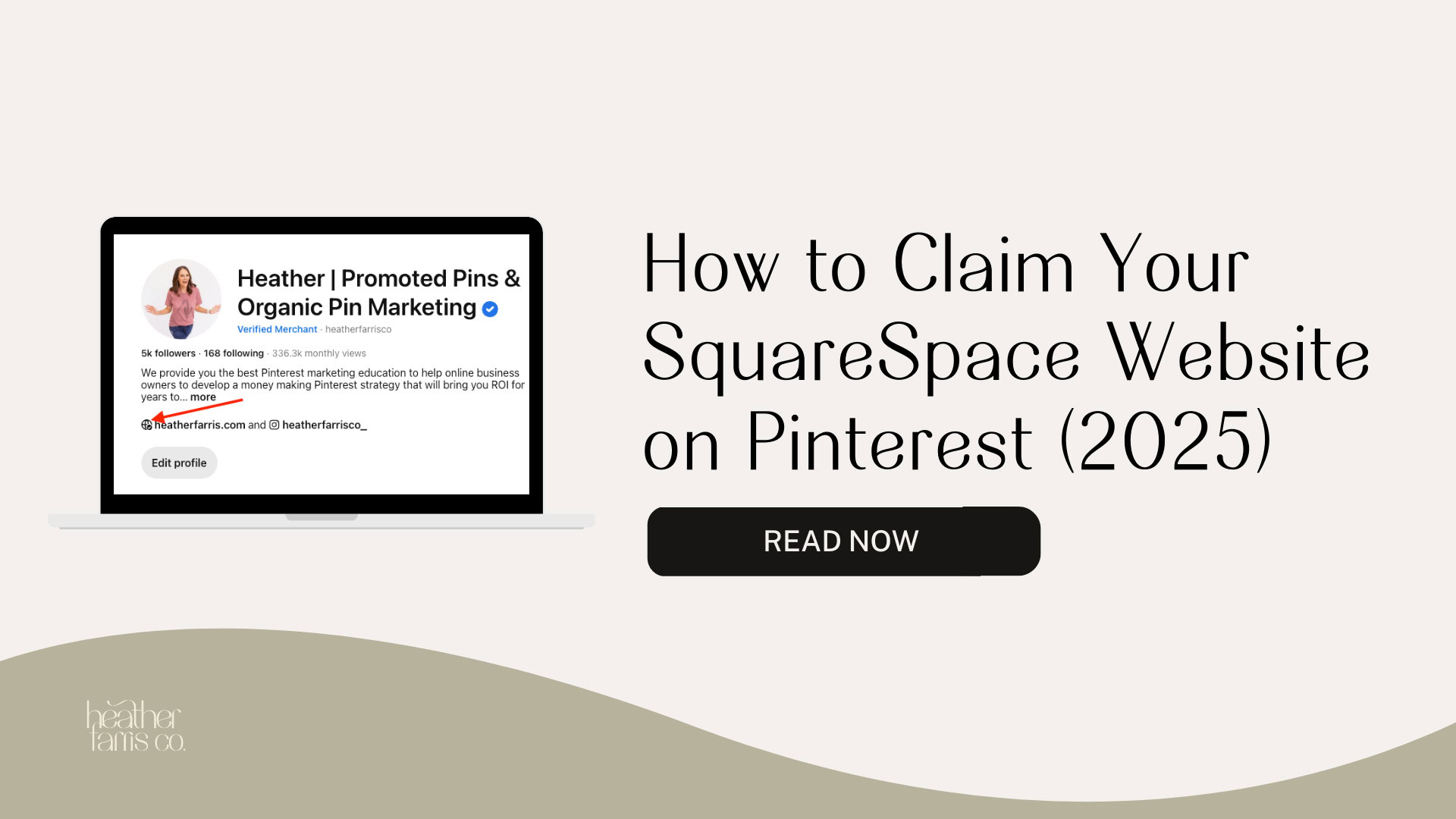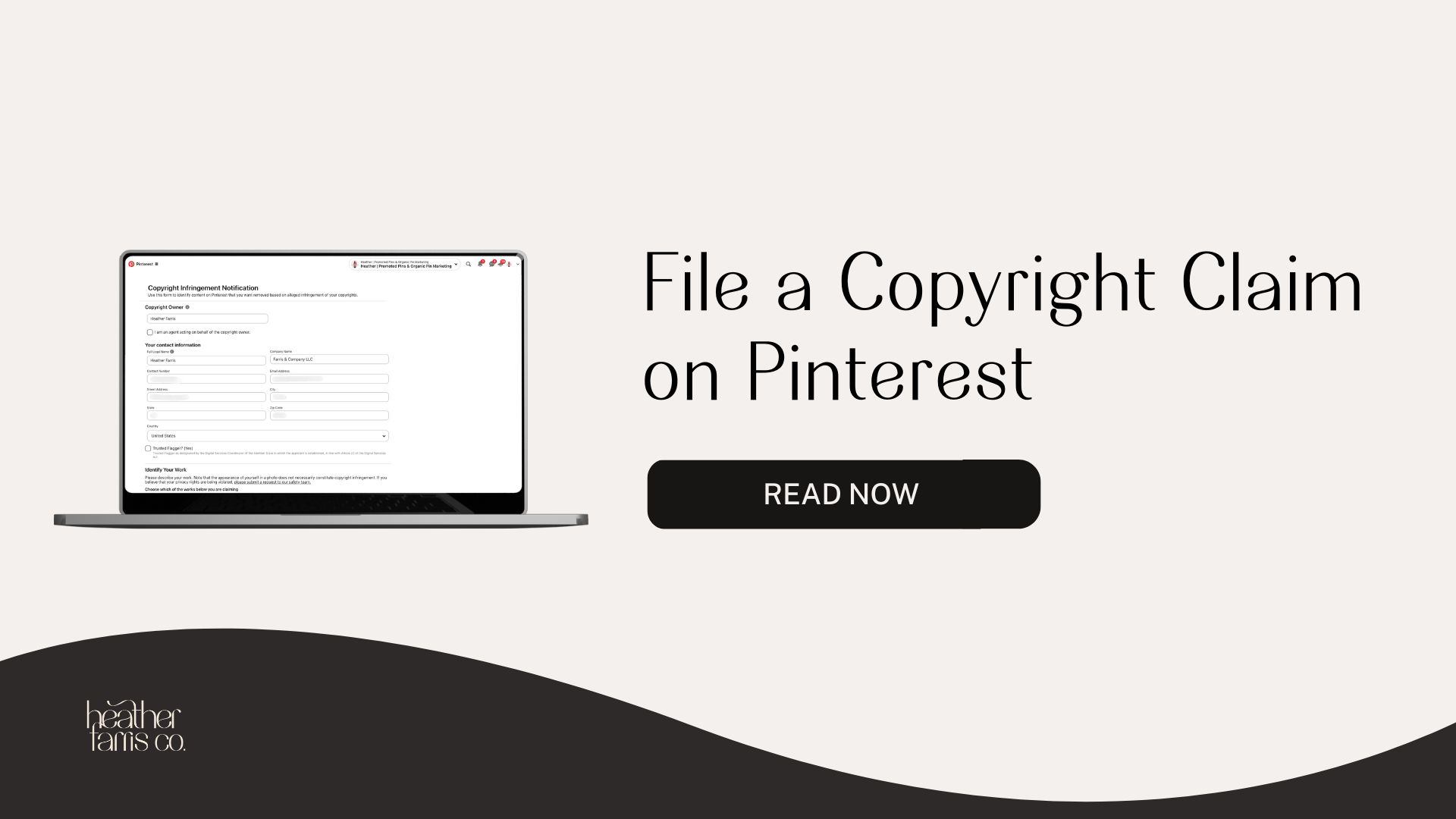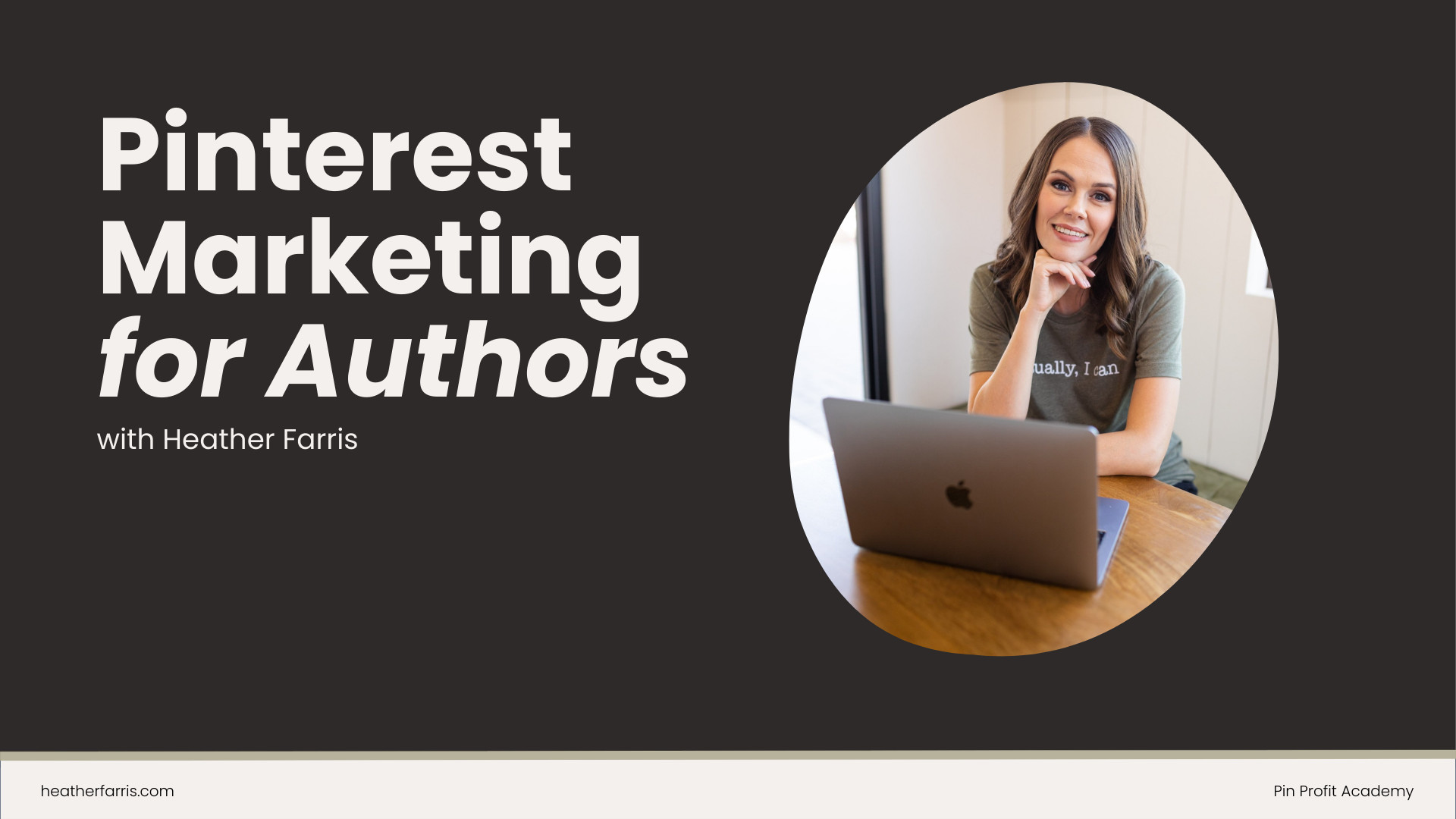Heather is a seasoned
Pinterest marketing expert & educator using the platform since you could reach the bottom of the feed - 2010.
About Heather Farris >
3 Simple Yet Effective Affiliate Marketing Strategies for Pinterest
August 6, 2024
Affiliate marketing strategies for Pinterest are a great way to earn extra income with your current Pinterest strategy. These can add an additional income stream to your existing business, or help you make a little extra cash on the side, but last for the long haul.
In today’s post, I will walk you through three strategies, from beginner to advanced, and best practices that I use for affiliate marketing with Pinterest.
If you’re new here, my name is Heather Farris. I run a Pinterest marketing YouTube channel, a Pinterest marketing agency, and a paid membership program, Pin Profit Academy, where I teach all things Pinterest. I’ve been doing this for over six years, and I am a fully transparent, non-gatekeeping human who wants to share the goodness of Pinterest. You’re in the right place.
Having Pinterest for beginners foundations in place
Before implementing any of these affiliate marketing strategies for Pinterest, I will assume that you have already set up your Pinterest foundations. If you don’t have your Pinterest account set up, you can always visit our Pinterest for Beginners playlist. In that playlist, I will walk you through all the necessary steps to set up your Pinterest account, and then you can always come back to this post later.
I’ll also assume you have some sort of business going because these strategies require you already have those vital steps in place.
RELATED: Pinterest For Total Beginners (Where to Start) PART 1
Customer journey for your product or service
First, like any other income stream, affiliate marketing takes time to build. You also need an audience to bring sales into that income stream.
Most people doing affiliate marketing don’t understand that there’s an entire user journey, from someone understanding that they have a pain point and a problem, to going on a platform and searching for a product to solve it.
As a beginner in affiliate marketing, you may not even know what that user journey needs to be. And that’s OK. I will walk you through the three strategies, and you can figure that part out later. I just wanted you to know that, with everything, this takes time.
If you’re watching videos with so-called Pinterest experts that promise you $100, $300, or even $500 a day with affiliate marketing on Pinterest; and all they’re telling you to do is create Pinterest pins using Canva, ClickBank, or some other platform, like ShareASale, to find affiliate links and plaster those on Pinterest… that’s not going to work.
So, let’s walk through the three strategies that I use for affiliate marketing.
RELATED: 4 Steps to Create a Pinterest Strategy That Works
#1. Affiliate marketing through creating long-form content
Strategy number one is creating your own website for a YouTube channel and creating long-form value-based content. This content will serve your audience. It will answer the pain points that those people have. Ultimately they will go on to purchase from you.
I will now walk through some examples I have laid out for this strategy. First, create a long-form blog post like what I have here.
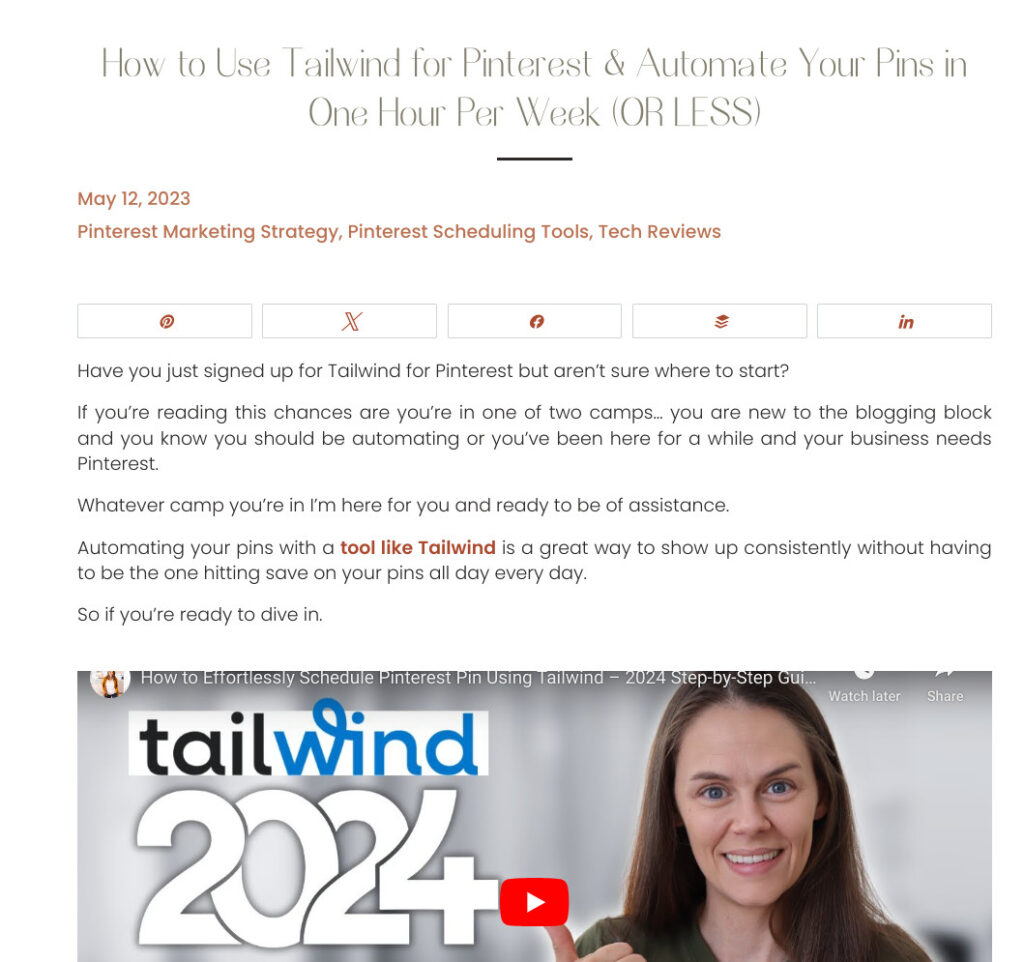
This blog post details how you can use a program like Tailwind to schedule your Pinterest pins in an hour or less per week. This is long-form value content that people are looking for.
- They’re looking for how to use Tailwind for their business.
- They’re looking for Pinterest schedulers that are approved.
Those two search terms alone bring me quite a lot of traffic to my website and my YouTube channel. People find this video and this blog post. I’ve covered it from both angles, and I have detailed the method to use Tailwind to schedule their pins.
RELATED: How to Use Tailwind for Pinterest & Automate Your Pins in One Hour Per Week (OR LESS)
How affiliate payouts can work
Once they find this new content, if they don’t have a Tailwind account and are convinced, they use my affiliate link and sign up. This way, I earn an affiliate commission on that sale. At one point, these commissions used to be recurring; they are now a one-time affiliate payout.
Some programs are a one-time payout, and others are a monthly payout. So that is tactic number one: create long-form value content and show people how to do something, answer a question, solve a pain and then provide the solution.
RELATED: 5 Types of Content Creation You Need to Generate More Sales
#2. Affiliate marketing through short-form video content & using Pinterest product tags
My second strategy, especially for content creators, is creating short-form video content on Pinterest in the form of video pins. You can create video pins and link your affiliate links to those pins. (All types of pins will allow you to link out with an affiliate link, but I find short-form video pins the best trend right now.)
This is a video pin with Amazon affiliate links. I’m using product stickers on this pin to monetize it and earn an affiliate commission. You don’t have to have stickers, the link out from your pin can be the affiliate link too.
I created a long-form idea pin that shows you my favorite desk accessories, and then I linked those desk accessories to the idea pin through Amazon affiliate account. Anytime someone clicks on my affiliate link within that 24-hour period, and then they purchase, I will earn a commission on any sales they complete.
These product stickers on the screen are clickable. You can then click this sticker, go to Amazon, and I will earn a commission on those purchases. So I walked the viewers through my keyboard, mouse, desk, microphone, mic stand, and speakers.
RELATED: How to Create Video Pins for Pinterest & 6 Benefits of Using Video
Affiliate income with Amazon or other companies
This is a great way to earn a commission on Amazon. I make anywhere from $100 to $400 a month on Amazon. The majority of my Amazon sales actually come through my travel blog. I don’t earn as much through this blog because I don’t utilize as many Amazon affiliate links but it still works.
The majority of my affiliate commissions through Heather Farris and Co. come in the form of subscriptions like Thrive Cart, Convert kit, Tailwind, you name it.
RELATED: How To Do Affiliate Marketing On Pinterest With a Blog
Affiliate link disclosure on pins
So strategy two is creating short-form content. However, with standard and video pins, you must disclose that you’re using an affiliate link.
So you have to write something like: This is my affiliate link, and I will earn a small commission. You have to disclose; just using #affiliate is not enough.
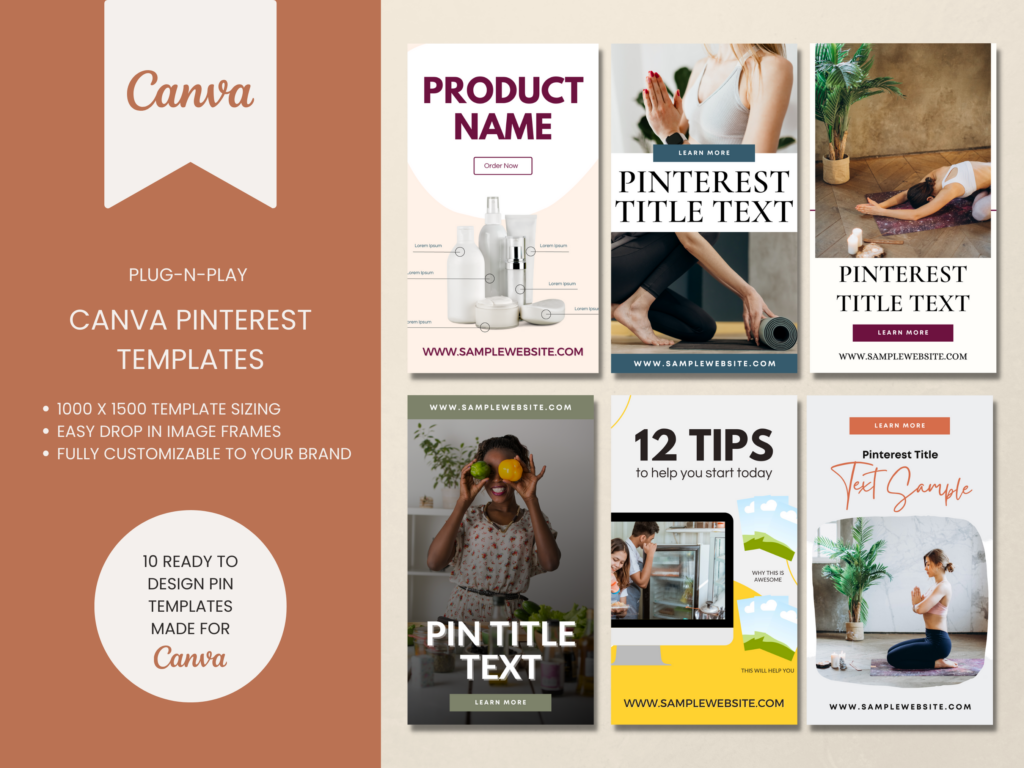
Video or Content Pinterest Templates
If you want traffic don’t rely on something just whipped up! Speed up your pin creation by using templates to get more pins out faster and more often.
These Pinterest templates are great for video content or blog posts & are ready to go. You can start creating pins on Pinterest in minutes.
#3. Affiliate funnels with an opt-in and nurture sequence to sell that affiliate product/service
I love creating affiliate funnels for things I use, love, and teach consistently. I don’t want to waste my time creating affiliate funnels for something I don’t care about or don’t consistently talk about because I need content to feed these funnels.
This is an advanced strategy, so you are going to need the following things on top of creating and signing up for the affiliate program:
- Created high-value content that feeds the funnel
- An email platform like Convert Kit
- You will need a landing page tool like Lead Pages
Unless you’re going to create landing pages on your own website, in which case Elementor would also work.
I love affiliate funnels because I can teach people how to do something, send them through to my email list, and nurture them. Eventually, they will purchase whatever I’m talking about or go into some other aspect of my business and purchase through my membership.
RELATED: Tripwire Funnel: How to Create a Powerful Lead Generation Machine
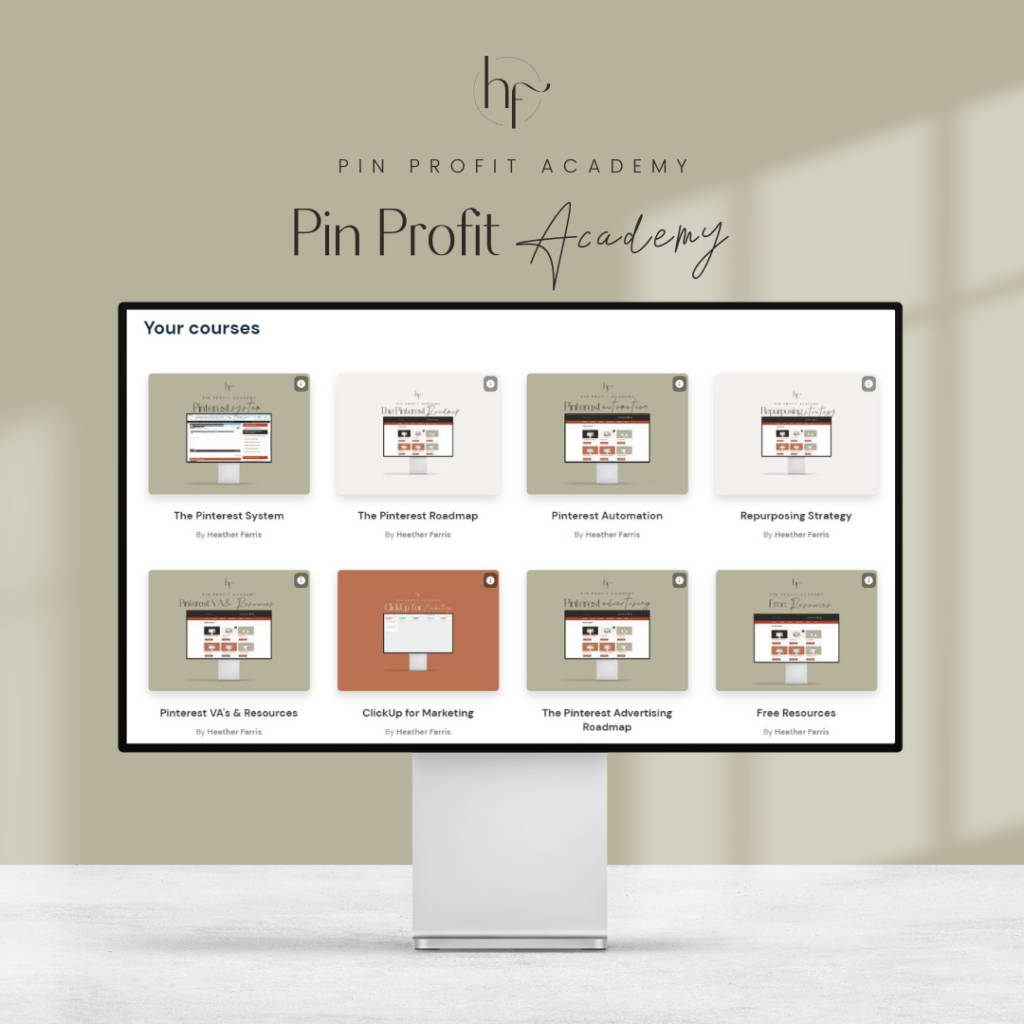
Pin Profit Academy
Marketing can be difficult and trying to figure it out on your own, especially with Pinterest, can be overwhelming.
I will show you how to double your traffic and sales without spending another minute on social media!
PPA is the only comprehensive membership program & community for creating, marketing & selling your products & services using Pinterest.
Pinterest automation guide advanced funnel example
Let me show you my Pinterest Automation Guide lead magnet and nurturing funnel. This is my biggest affiliate funnel by far because I am monetizing this sucker with every Pinterest scheduling tool available that I have reviewed, that I approve of, and that I talk about on the regular: Later, Tailwind, Planoly, Canva, Buffer, and then obviously the native Pinterest scheduler.
Some of these don’t have affiliate programs, but they are all featured in the guide.

So there are a couple of different ways someone can get into this affiliate funnel.
- They can go through this landing page above where they can sign up and get my Pinterest Automation guide.
- In my past blog content, they could take my Pinterest scheduler quiz. Based on the needs they’d fill out in the quiz, it would tell them immediately what scheduling tool was the better fit.
It will also send you a nurture sequence of emails with the Pinterest Automation Guide if you want it in a PDF format. And then, there are additional videos that go along with it, like how to use the tool, tutorial videos, etc.
Bonus ways to utilize affiliate links repeatedly
Once you have your blog post, your landing pages, you can use Pinterest to create pin images and link to those resources. So I link to my automation guide in my blog posts. Now from Pinterest, I’m sending people directly to the:
- affiliate link
- YouTube videos
- blog post
- ultimate guide
- all the options
You can see where this amount of content really adds up. But like I said, the funnels are a more advanced strategy. You will need more resources and money to invest in the tools to then get this out into the world.
RELATED: I Tested Pinterest Approved Schedulers So You Don’t Have To
Benefits of affiliate funnels
So, affiliate funnels are a great way to go the extra mile. If, like me, you love creating content on tools on different things that you use in your business, you have the funnel capability to set it up on the back end. You can capture those emails and have a better chance to then nurture those people to the sale.
A lot of people are not ready. I advise against signing up for a Pinterest Scheduler when you’re getting started. So this gives me a way to nurture people through the beginning of a Pinterest marketing strategy and then walk them through the next phase of choosing a scheduler when they’re serious about their Pinterest marketing strategy.
I really love affiliate funnels. This works great for me; it has brought me a consistent stream of affiliate income. Planoly doesn’t have an affiliate program anymore, but Tailwind pays anywhere from $15 to $17 per sale, which can add up. So affiliate funnels are definitely a great way to go the extra mile if you are looking for a more advanced affiliate marketing strategy.
RELATED: 5 Types of Content Creation You Need to Generate More Sales
Final thoughts on affiliate marketing strategies for Pinterest
I’ve obviously implemented all three of these into my business. As you can see, I’ve shown you all the receipts for the different things you can look at. Use all of these affiliate marketing strategies for Pinterest to get maximum results.
I really love these three strategies and I don’t think enough people talk about the actual strategies you can utilize to begin growing affiliate marketing income through Pinterest, social media platforms, and your email list. I just wanted to bring that to you today.
Leave me a comment below and let me know if you’re going to use strategy one, two, or three or if you’re already using a number of those in your business. If you want more tutorials on a complete marketing strategy for Pinterest, watch our Pinterest marketing strategy playlist.
Pin it for later


Heather Farris went to school for accounting and worked for years in banking and finance. After finding all of that entirely too boring she started her first blog in her basement in August of 2016. She has started 3 blogs in the marketing, motherhood and travel niches and used Pinterest to grow them all. She quickly became the go-to Pinterest strategist in her peer circles and has been implementing strategies, driving traffic and sales through organic and paid tactics for her clients. On this blog and her YouTube channel, as a renowned Pinterest marketing expert, she educates the public about clear and transparent marketing strategies to help them to grow on Pinterest and in other places online as a renowned Pinterest marketing expert.
